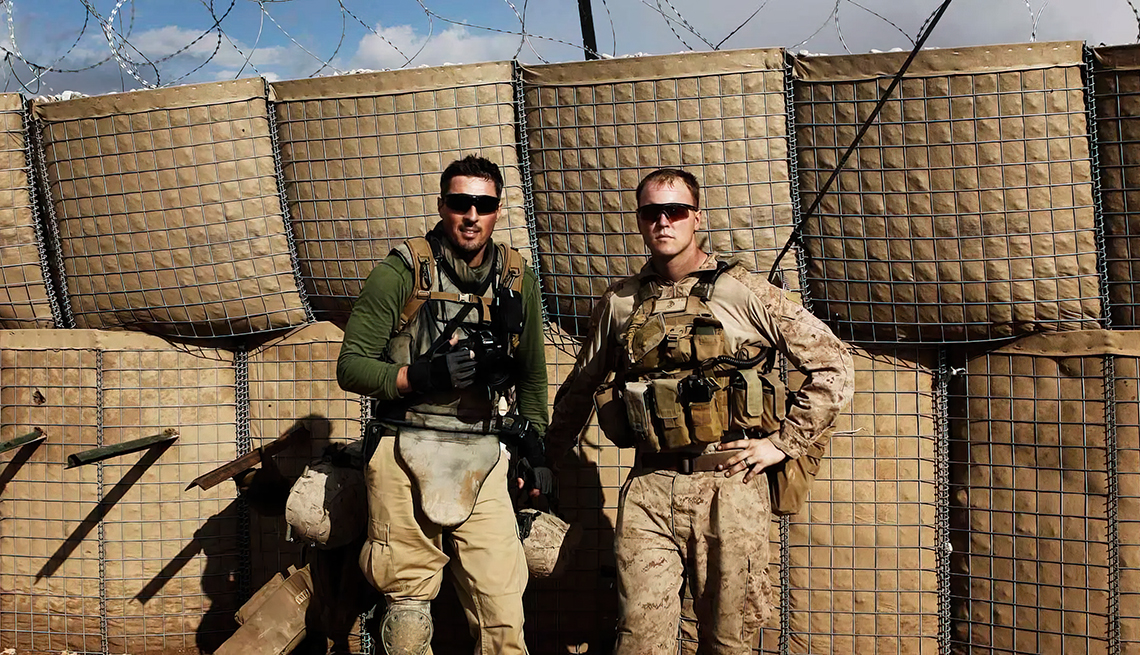
- Select a language for the TTS:
- UK English Female
- UK English Male
- US English Female
- US English Male
- Australian Female
- Australian Male
- Language selected: (auto detect) - EN
Play all audios:
Within hours of the firefight, O’Reilly’s photos were published online. But for Brennan, his Marine Corps career was over, after being diagnosed with a traumatic brain injury and
post-traumatic-stress disorder due to the battle. Embedded journalist Finnbar O'Reilly (left) with squad leader Thomas Brennan in Afghanistan, 2010. Thomas Brennan A NEW CHANCE TO
SERVE Upon returning home, Brennan recalls pushing his wife and daughter away, disengaging and falling into a drinking habit. “I needed to accept the fact that I was never going to get
over what I went through. Combat is loud, chaotic, fear, anger, sadness. It’s got all the emotions,” he said. As a result, he started therapy but didn’t know where to begin. Due to his
brain injury, he was struggling to put words together verbally, so his therapist recommended writing down his thoughts. From there he just started writing and writing. Eventually, he wrote a
thank-you letter to O’Reilly for his photos and to tell him how much the images helped him recover in therapy. Brennan sent the note to a New York Times editor whom O’Reilly had worked
with while embedded in Afghanistan. They had exchanged messages the year prior when fact-checking O’Reilly’s account. Brennan was hoping simply to get some grammar help before sending the
letter to O’Reilly. But, just a few hours later, the editor asked if The New York Times could publish the piece he submitted. Although journalism was never on Brennan’s radar, he
recognized through this process the need for reporting that bridges the military and civilian divide. So, in 2014, he attended Columbia University’s Graduate School of Journalism, where he
developed his plan for _the War Horse_ and raised money online to make his dream a reality. Today, the publication has won top industry awards and has most recently covered burn pits,
toxic exposure, the criminal justice system, gender issues in uniform and health care, and has served as a vehicle for first-person reflections, representing all eras of service. “The
military’s job is to win our wars. And if we can help hold people accountable in a way that makes sure that our experiment and democracy survives, that’s what I see our mission as. That’s
what drives me. Journalism is another opportunity to serve,” Brennan said. _This is the seventh episode from AARP Studios’ new documentary series _Reporting for Duty._ Each month you can
expect a new inspirational story about veterans and military families at _YouTube.com/aarp__








